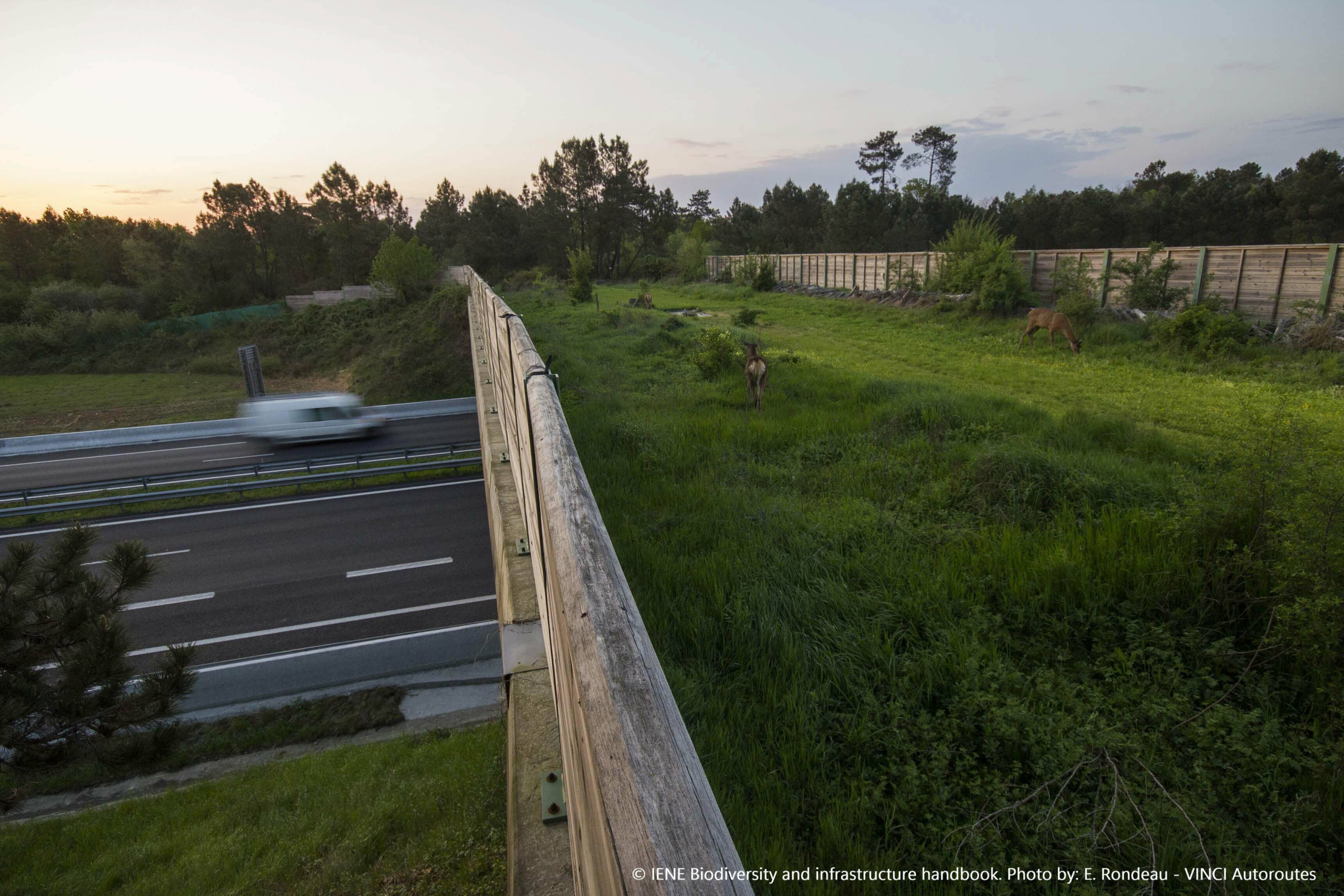Overview
After application and improvement of mitigation measures for decades, a large number of solutions are currently available which can avoid and reduce the negative effects of infrastructure on nature. Such measures are planned and designed particularly under Strategic Environmental Assessment (SEA) and Environmental Impact Assessment (EIA) procedures, which apply to new infrastructure projects but in some cases also to the upgrading of infrastructure under operation. Effective evidence-based measures must be focused particularly on mitigating the impact of traffic and infrastructure on biodiversity as well as other negative effects such as landscape fragmentation and spread of Invasive Alien Species (IAS).
Moreover, actions can be deployed which achieve a Net Gain (NG) of biodiversity. Transport infrastructure authorities and operators may contribute to habitat defragmentation, restoring ecosystems and re-establishing ecological connectivity. Plans which aim to adapt existing infrastructure in the face of extreme weather events related to climate change offer great opportunities to apply Nature-based Solutions (NbS) and contribute to the halting of biodiversity loss.
Main messages
- Digitalisation and decarbonisation are currently transforming transport infrastructure and offer opportunities to mainstream biodiversity throughout the entire infrastructure life cycle. Synergies and opportunities arise from cooperation between ecologists and engineers to apply innovative practices and new technologies, providing solutions to emerging trends and new scenarios related to climate change.
- Mitigation measures must be developed following the mitigation hierarchy (Avoid – Reduce – Compensate; see Chapter 3 – The mitigation hierarchy). It must also be implemented and accurately integrated through all the infrastructure life cycle phases (see Chapter 2 – Policy, strategy and planning): Strategic Planning, Design, Construction, Operation/Maintenance and in the Upgrade/Adaptation processes. As a general rule, earlier stages in the infrastructure development process provide more opportunities to avoid negative effects than later stages. However, adapting existing infrastructure may also greatly contribute to benefitting nature.
- Location of the measures is a critical decision which determines success or failure. Accurate ecological analyses to identify sites which guarantee best cost-benefit balances are an essential step in the design of mitigation.
- Appropriate design is critical to define measures that provide solutions to multiple conflicts and challenges. For example, a wildlife passage combined with fencing, constructed to reduce wildlife mortality, may also increase traffic safety and contribute to the restoration of ecological connectivity.
- Habitats related to transport infrastructure (e.g. verges, wildlife passages and drainages) can be adapted to provide refuges or food for wildlife. Nevertheless, attracting fauna to areas where its presence could create conflicts or put it at high risk of mortality must be avoided.
- Benefits for people can also be achieved in multiple ways through the reduction of traffic accident hazards, restoration of ecosystems and services they provide or the provision of human-related uses in habitats related to transport infrastructure.
Actions to take
- Apply mitigation measures to minimise the risk of wildlife mortality and increase infrastructure safety and functionality. Examples include: reducing wildlife-risk events such as animal-vehicle collisions, animal drownings in waterways, bird strikes at airports, bird collisions with or electrocution from railways catenaries or powerlines, bird collisions with transparent screens, or animals becoming trapped in any parts of the infrastructure.
- Preserve or restore ecological connectivity across infrastructures, providing safe wildlife passages and connecting ecosystems fragmented by the infrastructure. This will reduce the infrastructure barrier effect and help to preserve ecological corridors. Such actions will contribute to long-term persistence of wildlife populations and to climate change adaptation.
- Adapt existing infrastructure to reduce the negative effects of climate-related hazards, considering opportunities for habitat defragmentation. Finding synergic solutions to increase infrastructure resilience while enhancing biodiversity may improve the cost-effectiveness ratio of such measures.
- Apply NbS to drainage systems, verges and other green area maintenance to help reducing the effects of climate risk events, which impact infrastructure negatively in addition to surrounding habitats and urbanised areas (e.g. floods, forest fires, or erosion).
- Implement early-awareness and control measures to prevent the spread of Invasive Alien Species (IAS), which may threaten native habitats and species, pose problems for infrastructure maintenance, and even increase health risks to people.
- Encourage species which provide essential ecosystem services and particularly, contribute to the recovery of pollinators by appropriately maintaining green areas associated with transport infrastructure.
- Reduce the use of pesticides and fertilizers and minimise noise and light pollution, which improves both the quality of habitats for wildlife and human health.
- Evaluate the effectiveness of mitigation measures and disseminate the results, fostering the replication of best practice through cooperative learning and training.
